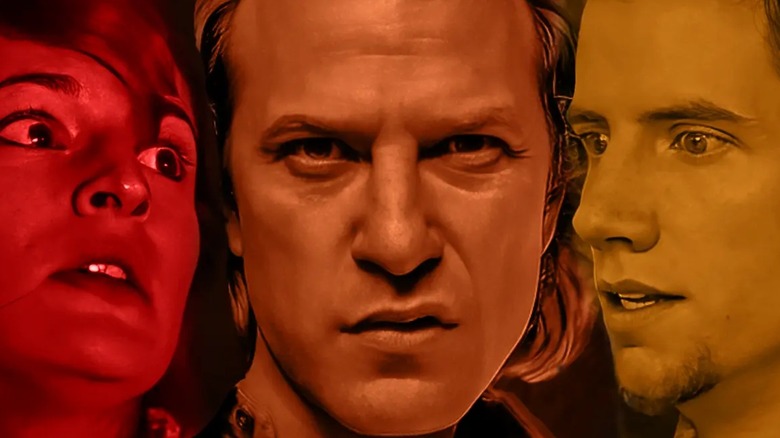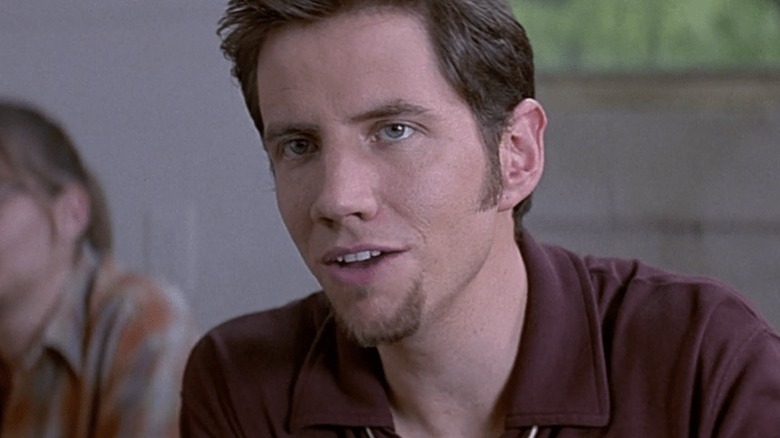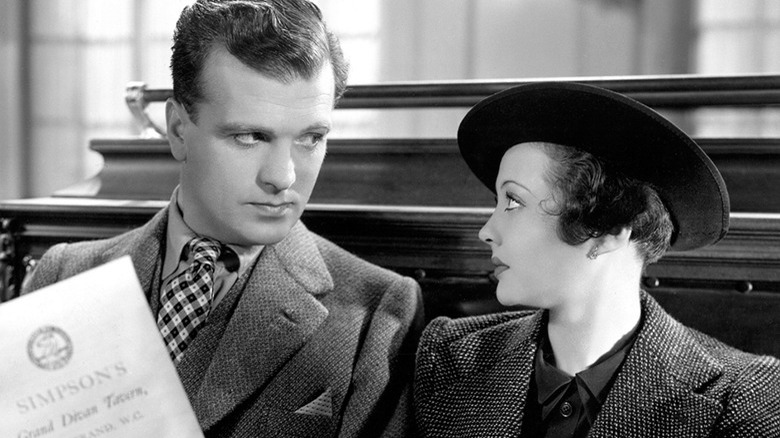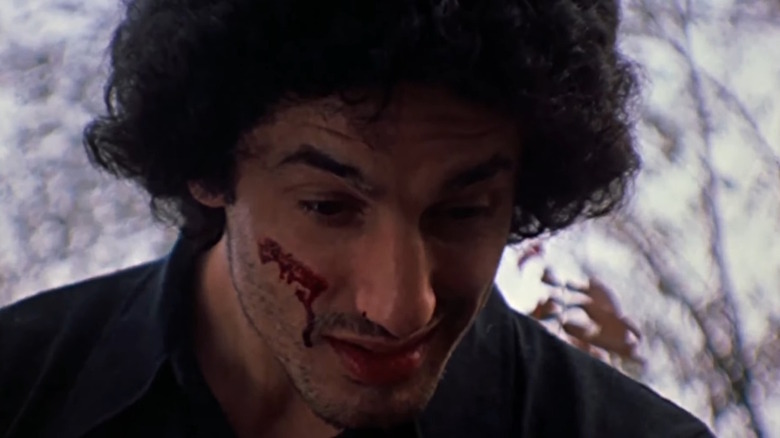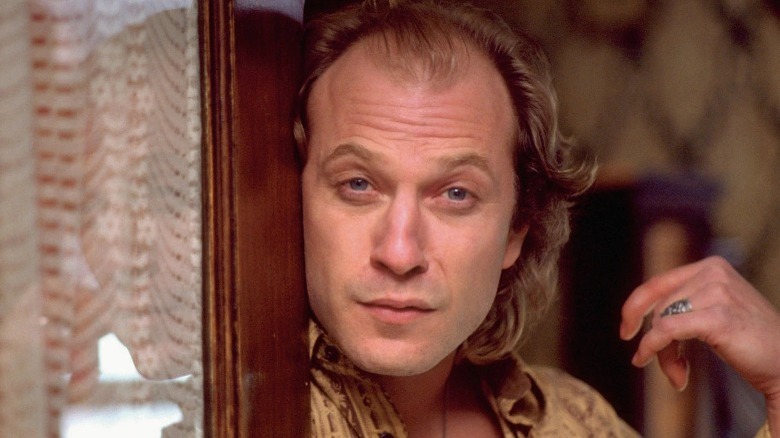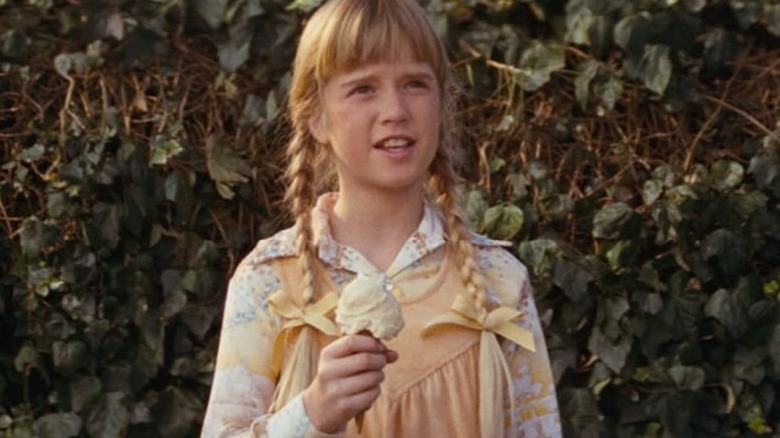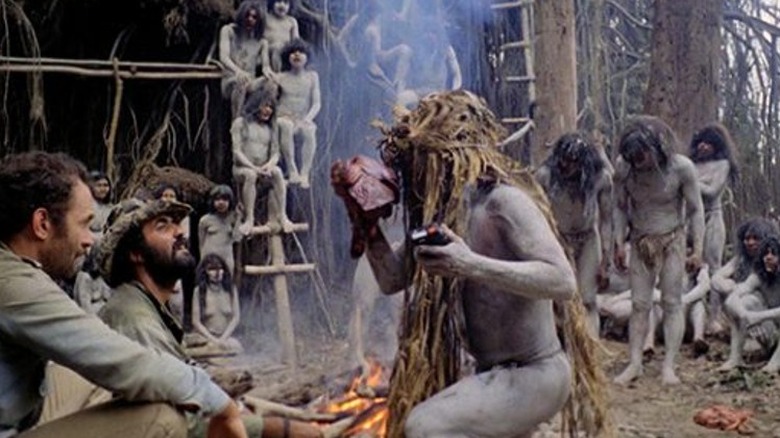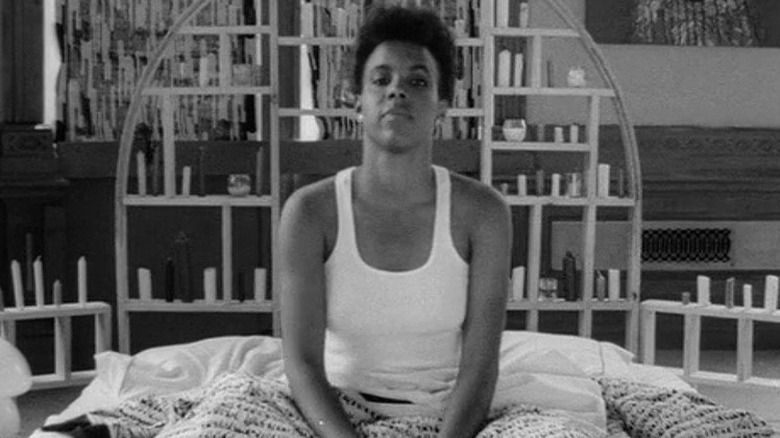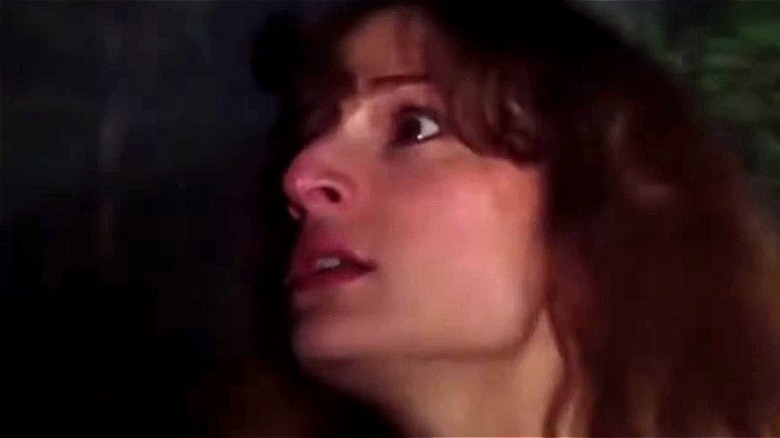Disturbing Movie Scenes Filmmakers Regret The Most
The following article includes discussions of graphic sexual assault.
Horror is all about pushing boundaries. As a means to refract contemporary fears, anxieties, and pressures, the horror genre, almost by design, must resist censoring or constraining the terror on screen. Some of the most iconic horror sequences, such as Janet Leigh's death in "Psycho" and the chestburster in "Alien," were boundary-pushing triumphs. Richly textured and gorgeously composed shocks with purpose, they have endured as hallmarks of the genre.
Of course, horror can go too far. Savagery and gruesome violence can have the opposite effect by blunting the efficacy of any given scare. It's why several filmmakers, such as Damien Leone, director of 2002's indie sensation "Terrifier 2," opted to scrap some material, worried the brutality would hurt rather than elevate. And it's not just horror. Some of the most disturbing movie scenes imaginable exist firmly in other genres. Sometimes, those filmmakers retroactively regret the brutality on-screen. It's rare, but it happens. We'll be looking at eight filmmakers, from writers to directors working in horror and other genres, who regretted disturbing scenes in their films. Sometimes, this was because of vacillating public tastes. Other times, it was simple inexperience. No matter the case, these eight filmmakers wish they hadn't taken their material to the level they did.
Randy's death in Scream 2
While Kevin Williamson made a name for himself in television with such shows as "Dawson's Creek," he's best known for creating the "Scream" series. Although Williamson only scripted the first, second, and fourth entries (he drafted a treatment for the third, though Ehren Kruger is credited with the final draft), the series belongs to him as much as to the late horror maestro Wes Craven. Although "Scream 6" may be the most brutal entry, the series has never been especially boundary-pushing.
Yet, in an interview with The Hollywood Reporter, Williamson curiously notes regret at the death of Jamie Kennedy's beloved movie buff Randy Meeks in"Scream 2." Williamson remarks on the need to up the stakes, and among the quartet of returning players, Randy was the most expendable. While it elevated the tension, Williamson regretted scripting Randy's surprising and brutal death. "I'd love to see what his trauma was like after surviving," Williamson says, "but unfortunately, I killed him." At least fans have Randy's posthumous speech in "Scream 3."
Child death in Sabotage
Alfred Hitchcock's "Sabotage" is a tour de force of early Hollywood suspense. There's a reason The Daily Telegraph lists it as the third-best British film of all time. It's a sensation in boundary-pushing cinema, an early calling card for Hitchcock's legacy as the master of suspense. While "Sabotage" might be the first instance of regrettable child death on this list, it won't be the last. Although it's not the most graphic (that honor belongs to John Carpenter), it might be the most disturbing.
Sylvia Sidney's Mrs. Verloc suspects her husband, Karl Verloc (Oskar Homolka), is a terrorist. It's all old-school British suspense until Mrs. Verloc's brother, Stevie (Desmond Tester), is unknowingly roped into delivering a package for Karl. That package is a bomb, and after an interminable sequence, Stevie boards a bus. Shortly after, the bomb explodes, killing Stevie and the other passengers. In an essay for Criterion, writer Mark Fleischmann describes the scene as "cinematic terrorism." Hitchcock agreed that Stevie's death went too far, especially in 1936. No audience was prepared for the level of shocking savagery Hitchcock had in store.
Assault in The Last House on the Left
"The Last House on the Left" endures as a curious oddity from one of the genre's most sensitive directors. That may seem counterintuitive, with "The Hills Have Eyes" and "A Nightmare on Elm Street" rounding out Wes Craven's filmography. However, in the horror genre, the late legend was as humanist as they came. Craven was always interested in people, and while his output was often gruesome, it was never needlessly cruel. To Craven, death was never a joke. Admittedly, the same holds for "The Last House on the Left," an early progenitor for an entire subgenre of rape-revenge features, even if Craven himself would later regret how far the film went.
Broadly, "The Last House on the Left" involves the sexual assault and death of young women. The film was even promoted with the tagline "Can a movie go too far?" In one of his last interviews with the Front, Craven admitted that the legacy of his horror classic had indeed gone too far. It's a brutal, unforgiving film. Because of the low budget, its verisimilitude is frighteningly raw. Craven's later career would be defined by his commitment to empathic, humanistic ideals, even if he pushed boundaries to their limit early on.
If you or anyone you know has been a victim of sexual assault, help is available. Visit the Rape, Abuse & Incest National Network website or contact RAINN's National Helpline at 1-800-656-HOPE (4673).
Buffalo Bill in Silence of the Lambs
The legacy of the late Jonathan Demme's "The Silence of the Lambs" is as polarizing as it is fascinating. While the movie undoubtedly belongs to Jodie Foster's Clarice Starling and Anthony Hopkins' Hannibal Lecter, both Oscar-winning performances, Ted Levine's serial killer Buffalo Bill is no less critical to the movie's success. It's a delicate, disturbing performance that incited mounds of controversy over its portrayal of transgenderism and its ostensible undercurrent of transphobia. Key to Buffalo Bill's pathology is his desire to possess women — down to their skin. While Lecter is quick to dismiss Buffalo Bill's trans identity, arguing that Bill is incidentally coveting women rather than actively wanting to transition, the movie remains both progressive and problematic.
Trans audiences especially have reclaimed Buffalo Bill as an early example, problematic or not, of trans identity on-screen (a similar phenomenon has happened with Robert Hiltzik's "Sleepaway Camp"). Demme, however, has struggled with the legacy, exploring in an interview with The Daily Beast the complicated nature of Bill's characterization. Demme defends his work while simultaneously regretting a few beats — most prominently a late-act dance number — that likely muddied the waters. While Demme never intended for Buffalo Bill to come across as transphobic, in retrospect, he wishes he'd considered the characterization more delicately.
Child death in Assault on Precinct 13
Delicacy was something John Carpenter had little time for in the grindhouse classic "Assault on Precinct 13." Lt. Ethan Bishop (Austin Stoker) and convicted murderer Napoleon Wilson (Darwin Joston) must defend a decommissioned police station from an onslaught of gang gunfire. That's the thrust of the movie, which had the rare honor of receiving an early-aughts remake that respected the source material. As part of the horror master's legacy, "Assault on Precinct 13" is not without controversy. Though in terms of endurance, the death of a little girl, played by Kim Richards, dominates the conversation.
Early in "Assault on Precinct 13," the gang shoots a little girl after approaching her in an ice cream truck. Although Carpenter has contended the death was needed to illustrate how senselessly violent the gang is, he has also hinted at regretting the death. As standards have shifted, it's likely a bit too shocking. Still, it's the most talked about moment in one of Carpenter's best.
Real animal death in Cannibal Holocaust
Though its legacy seems rooted in infamy rather than artistic merit, the late Ruggero Deodato's "Cannibal Holocaust" is a horror classic. However, "Cannibal Holocaust" walks a dangerous line. It arguably exploits the indigenous tribes it centers on, and most disturbingly, the film features the real on-screen deaths of animals. The violence was so shocking that Deodato was arrested by Italian authorities and put on trial for murder and animal cruelty (naturally, those charges were dropped).
Deodato never escaped the film's infamy, and despite several projects following "Cannibal Holocaust," it remained all anyone wanted to talk about. In a 2011 interview with The Guardian, the director hinted at regretting the scenes of animal slaughter. For the Italian director, animal deaths were a part of life. "In my youth, growing up, I spent a lot of time in the country close to animals and therefore often seeing the moment of their death," Deodato said. Nevertheless, in a 2005 Fangoria interview, Deodato was more direct stating he was "stupid to introduce animals" (via Bloody Disgusting).
Assault in She's Gotta Have It
Spike Lee is one of the most compelling voices in contemporary cinema. Lee ceaselessly reinvents himself, shifting from comedy to war to the minutiae of Black urban life to broad blockbuster crime thrillers. His first feature, "She's Gotta Have It," starring Tracy Camilla Johns, is one of his best. He even won the Prix de la Jeunesse (Award for the Youth) at the 1986 Cannes Film Festival, an honor that accelerated his cinematic career. Principally a comedy, "She's Gotta Have It" nonetheless contains a sexual assault the director would later regret.
The movie follows Johns' Nola Darling as she juggles three suitors. It's an affable performance, and Lee proves himself an astute observer of distinctly Black interpersonal relationships — material that contemporary film still doesn't depict often enough. Speaking with Deadline in 2014, Lee noted one regret in his career — the aforementioned assault. "It made light of rape, and that's the one thing I would take back," Lee says. It's a laudable admission indicative of Lee's ability to reflect upon himself, cinema, and storytelling. "She's Gotta Have It" is a perfect calling card for a moviemaking powerhouse, even if that regrettable scene stands out.
If you or anyone you know has been a victim of sexual assault, help is available. Visit the Rape, Abuse & Incest National Network website or contact RAINN's National Helpline at 1-800-656-HOPE (4673).
Tree Attack in The Evil Dead
What started as Sam Raimi's indie backwoods splatter movie has morphed into a multimedia horror phenomenon. There are video games, a television series, and even new feature-length entries in the franchise that continue to shock and surprise. Raimi's original remains a classic, one of the best scary movies ever made. "Evil Dead" is as shocking as it is influential, inspiring legions of similar properties and all but creating the "cabin in the woods" horror trope. Despite its legacy, Raimi regrets one key moment.
In a prelude to the horrors to come, Cheryl (Ellen Sandweiss), sister of Bruce Campbell's Ash, heads into the woods to investigate some strange noises, unaware of the full breadth of horror unleashed from their cabin. There, she is attacked and raped by a tree. It's a shocking moment that's totally at odds with the Grand Guignol slapstick the rest of the movie cultivates. Raimi has since spoken about his regret regarding the scene's inclusion, noting audiences were offended rather than frightened by the scene. Raimi attributes the misstep to his youth, a commonality among several entries here. Regret or not, Fede Alvarez's 2013 remake includes an updated sequence that's arguably more graphic than the original.
If you or anyone you know has been a victim of sexual assault, help is available. Visit the Rape, Abuse & Incest National Network website or contact RAINN's National Helpline at 1-800-656-HOPE (4673).
